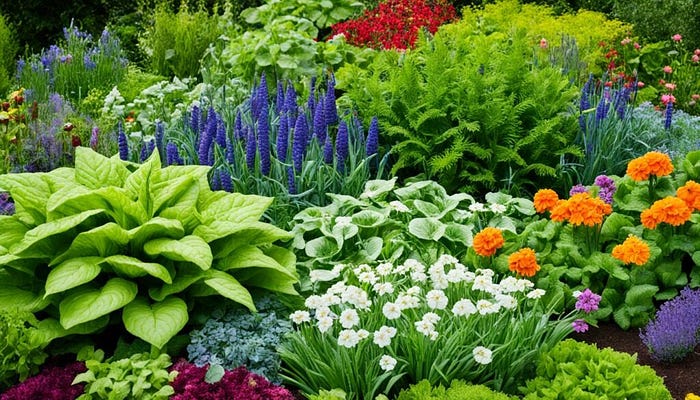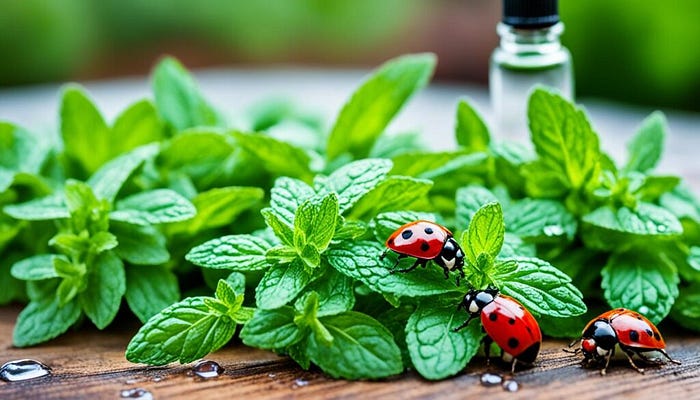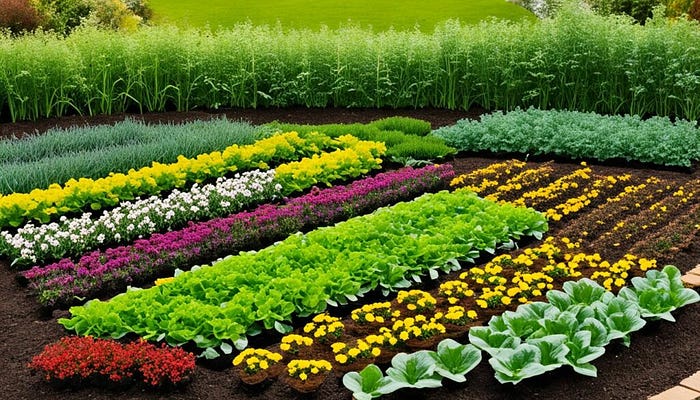How to Tackle Common Garden Pests for a Healthier Garden
Do you feel disheartened seeing pests and diseases ruin your garden? You’re not alone. A massive 75% of gardeners deal with these threats. They can harm your plants, making them less vibrant.1 Yet, there are ways to fight back safely. Would you like to learn how to keep your garden pests-free?
Impact of Pesticides on Humans
Pesticides are chemicals used to kill pests. They are ending up in our bodies. A U.S. study found them in 90% of our urine samples.
This happens because many fruits and vegetables we eat have these chemicals. They stay in our bodies and can affect our health. People who work on farms are at an even bigger risk because they are around pesticides more often.
Pesticide Residues in Our Bodies
Ninety percent of us have these pesticide byproducts in our urine. This shows how much we’re exposed, especially from fruits and veggies. The long-term effects on our health are worrying. We need more research and rules to keep us safe.
Health Risks for Farm Workers
Farm workers and their families have a high risk of pesticide exposure. They handle these chemicals directly. This makes them more likely to get sick from pesticides or have health problems later.
Protecting Children from Pesticide Exposure
Kids are especially at risk from pesticides. The EPA tries to keep kids safe by limiting pesticide use in their food. Keeping our youngest safe is very important for their growth and health.
Even organic pesticides can be harmful. They might not be as safe as we think. They can hurt useful insects in our gardens. It’s key to know the full effects of these chemicals. This way, we can protect both people and nature effectively.
Impact of Pesticides on Pollinators
Neonicotinoids, a new type of pesticide, are causing a sharp drop in pollinators such as honeybees and wildlife. Over the last ten years, these pesticides treated crops like corn and soy, leading to a 33% loss in honeybee colonies in the US in just two years. Besides killing pests, neonicotinoids hurt the insects that are helpful, like bees and butterflies, to our gardens and natural areas.
Decline of Honeybee Colonies
A staggering 90% of pollen samples from bee hives in farming areas show contamination by more than one pesticide. Over 90% of stream samples are also contaminated by multiple pesticides. Pesticides pose the highest risk when used on or close to plants in bloom, exposing pollinators as they feed on tainted pollen and nectar. Butterflies and wild bees are also threatened. They get in touch with these chemicals when the plants they need are treated.
Neonicotinoid Pesticides and Wildlife
Neonicotinoids are insecticides used across farms and cities. Tests have found 91% of pollen samples had pesticide residues, with an average of six different chemicals per sample. Some samples had up to 31 different pesticides. In a single piece of beeswax, researchers found 39 different kinds. Even small amounts of certain chemicals can be dangerous for bee babies. These pesticides also harm the learning, locating food, and returning skills of honeybees and bumble bees.
Identifying Garden Pests and Diseases
Seeing pests or diseases in your garden can be upsetting. But, it’s important to know what’s wrong first. Pests eat the plants, while diseases cause issues like wilting or mold. It’s key to act fast. If not, these problems can quickly move through your garden.
Distinguishing Pests from Diseases
Start by closely looking at the affected plants. Try to match the symptoms to possible pests or diseases. Pests such as aphids, spider mites, squash bugs, wireworms, and cucumber beetles can be spotted through inspection or their damage. Diseases, like mosaic virus, Botrytis, powdery mildew, and leaf spot, also show unique signs. Knowing this helps make a solid plan to control them.
Good Gardening Habits
Doing the right things in your garden can stop many pest and disease problems. Clearing out dead plants and debris keeps your garden healthy. So does not watering or fertilizing too much. Techniques like changing where you grow plants and planting certain things together can keep pests away from vegetables.

Natural Pest Repellents
Chemical pesticides, even organic ones, might hurt the garden’s balance and kill helpful bugs. Fortunately, there are natural ways to keep garden pests away. The article shows why natural ways, like using plants that pests don’t like, are better than strong chemicals.
Repellent Sprays
Making your own pest-repellent sprays with garlic, pepper, or neem oil is good for the garden. These sprays last a while without being bad for the environment. Neem oil can work for three weeks. Also, a spray made with vinegar, water, and a little soap can keep bugs away. So, these sprays stop bugs by making them avoid your plants or messing up their growth.

Dealing with Specific Pests and Diseases
Each garden problem needs a special solution to beat it. It’s vital to know exactly what you’re facing and use the right methods to stop blights, control fungi, and beat weeds and slugs.
Managing Blights
Blights make plants look bad and can even kill them. You can stop blights by keeping plants far enough from each other and making sure they have the right amount of water. Also, check that water doesn’t stand around plants too long.
Controlling Fungi
Some plant diseases look like mold or mildew. To stop them, you might have to use special fungicides. But, be careful. Some of these products can hurt good bugs and plants.
Early Detection Methods
Looking closely at your garden regularly can help you see issues early. Watch for signs like leaves that have bites taken out of them or missing seedling stems. Also, if you see plants turning yellow or wilting, there might be pests around.
Signs of Infestation or Disease
Finding out what’s harming your plants is important to stop it. Look for groups of aphids on new leaves, or grasshoppers on shrubs. Don’t forget about cucumber beetles on fruits and mealybugs on leaves. Quick action is the best way to keep the problem small.
Tackling issues when they’re small can stop larger problems later. With a watchful eye and quick responses, you can keep your garden safe and beautiful.

Conclusion
Preventing pests in the garden is vital to keep it healthy. This involves avoiding harmful pesticides. Gardeners should appreciate the negative effects of these chemicals.
It’s crucial to know how to spot and solve pest and disease troubles. This is done through various techniques, such as promoting helpful insects and selecting strong plant types.



Comments
Post a Comment